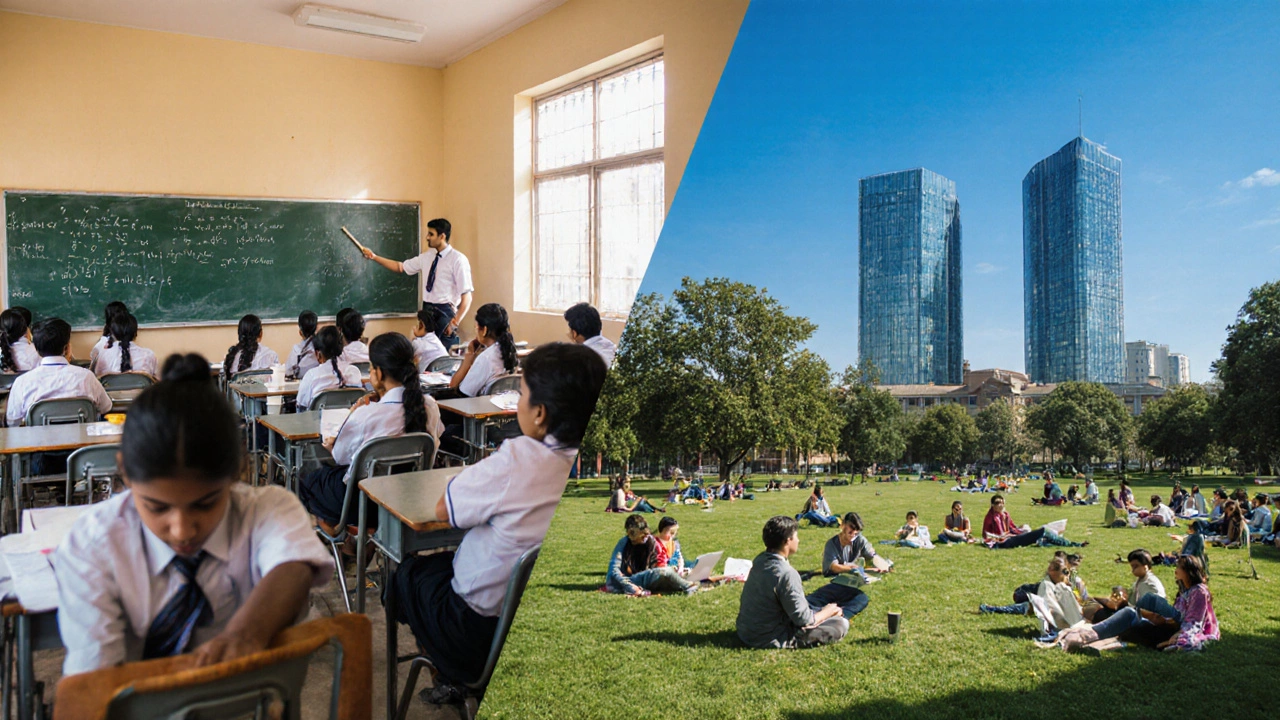Indian education system: Exams, Boards, and Future Pathways
When exploring Indian education system, the network of schools, curricula, and higher‑learning institutions that shape learning across the country. Also known as India’s education framework, it drives everything from primary classrooms to world‑class research labs, you quickly see how it mixes public policy, private initiative, and cultural expectations.
The system encompasses three main layers: primary & secondary schooling, higher education, and vocational training. At the school level, boards such as CBSE, Central Board of Secondary Education, which sets a national syllabus for many private and government schools and ICSE, Indian Certificate of Secondary Education, known for a broader, language‑heavy curriculum dictate what students learn and how they are assessed. This directly influences college entrance exams like the JEE, Joint Entrance Examination for engineering aspirants, especially for IITs and the NEET, National Eligibility cum Entrance Test for medical courses. In other words, the Indian education system requires competitive exams such as JEE and NEET to filter talent for elite institutions.
How new formats are reshaping learning
Beyond the traditional classroom, distance learning, online courses and virtual classrooms that let students study from anywhere is becoming a game‑changer. It offers flexibility for students in remote areas, working professionals, and anyone needing a second chance. Platforms ranging from government portals to private e‑learning sites now host curricula aligned with CBSE, ICSE, and even university degrees. This shift influences the Indian education system by expanding access and introducing tech‑driven pedagogy.
Meanwhile, higher education hubs like the IITs, Indian Institutes of Technology, premier engineering colleges that set the benchmark for technical education shape aspirations at the national level. Admission rates are razor‑thin, making the JEE a cultural phenomenon. The prestige of IITs and the rigorous preparation culture ripple down to school boards, where teachers tailor lessons to JEE‑oriented mathematics and physics. This creates a feedback loop: board curricula adapt to elite exam demands, and elite exams reinforce board priorities.
Vocational streams add another layer. Training programs in trades, IT support, and hospitality give students a direct route to employment without a four‑year degree. These programs often partner with industry bodies and are recognized by the University Grants Commission. By offering practical skills, vocational education reduces the pressure on competitive exams and broadens the overall skill base of the nation.
All these pieces—boards, competitive exams, distance learning, elite institutions, and vocational training—interact like a living organism. The Indian education system therefore isn’t a static set of rules; it evolves with policy changes, tech adoption, and market needs. Whether you’re a student choosing a board, a parent planning exam prep, or a professional looking at online courses, understanding these connections helps you make better decisions.
Below you’ll find a curated list of articles that dive deeper into each of these areas. From tips on cracking JEE and NEET to comparisons of CBSE vs. ICSE, from the rise of distance learning to the best MBA specializations, the collection gives practical insight for anyone navigating India’s vast education landscape.
Oct
4

- by Dhruv Ainsley
- 0 Comments
Education in India vs USA: Which System Comes Out on Top?
A detailed, side‑by‑side comparison of India and USA education systems, covering structure, costs, outcomes, and which option fits different goals.